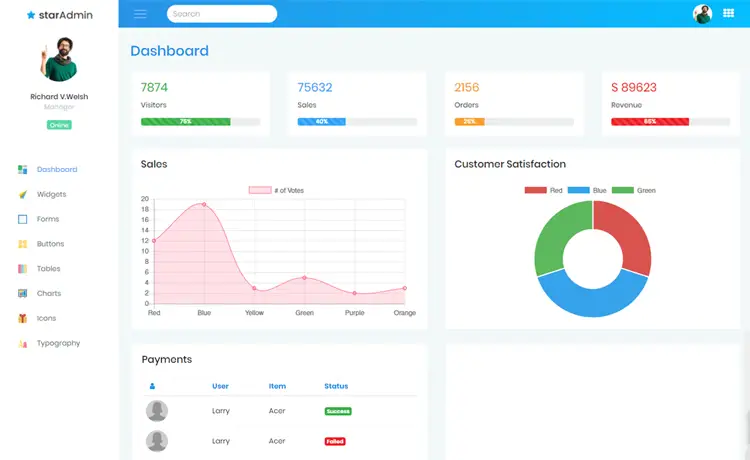Options Pattern In ASP.NET Core
By Tan Lee Published on Feb 21, 2025 425
By using strongly-typed classes to represent configuration settings, the pattern enhances security, reduces errors, and improves code clarity. Additionally, it provides flexibility when manipulating settings, which is especially useful for managing different configurations for development, staging, or production environments.
How to use the Options pattern in an ASP.NET Core application?
First, let's see how you can traditionally read the appsettings.json file in a typical ASP.NET Core project.
var builder = WebApplication.CreateBuilder(args);
var app = builder.Build();
app.MapGet("/api/v1/feature", (IConfiguration configuration) =>
{
var featureFlag = configuration
.GetSection("FeatureFlags:NewFeature").Value;
return Results.Ok(new
{
FeatureFlag = featureFlag
});
});
app.Run();In this example:
- We’re creating a simple ASP.NET Core API using the minimal API.
- The
IConfigurationinterface is used to access theappsettings.jsonfile directly. - In this case, we retrieve the value of
FeatureFlags:NewFeaturefrom the configuration, which could indicate whether a specific feature in the app is enabled.
For example, appsettings.json Configuration:
{
"FeatureFlags": {
"NewFeature": "Enabled"
}
}Output:
FeatureFlag: Enabled
While this method of configuration access works, it can lead to potential issues:
- Manual String-Based Access: Directly accessing values with string keys can result in typos and runtime errors, reducing code maintainability.
- Hard-Coded Paths: Incorrect or inconsistent key paths can cause bugs and errors in the configuration.
To mitigate these issues, we can use the IOptions<T> interface, which offers a type-safe and structured way to handle configuration settings.
Using the Options Pattern
Step 1: Create Configuration Classes
public class FeatureFlags
{
public string? NewFeature { get; init; }
}
public class AppSettings
{
public FeatureFlags? FeatureFlags { get; init; }
}Here, FeatureFlags and AppSettings represent the structure of your configuration settings, mimicking the layout of the appsettings.json file.
Step 2: Register Configuration in the Service Container
builder.Services.Configure<AppSettings>(
builder.Configuration.GetSection("FeatureFlags")
);We configure the AppSettings class to bind to the FeatureFlags section in the appsettings.json file.
Step 3: Inject IOptions<T> into Your Application Logic
app.MapGet("/api/v2/feature", (IOptions<AppSettings> options) =>
{
var featureFlag = options.Value.FeatureFlags?.NewFeature;
return Results.Ok(new
{
FeatureFlag = featureFlag
});
});In this example:
- The
IOptions<AppSettings>is injected into the endpoint, allowing access to the strongly-typed configuration settings. - The value of
NewFeatureis retrieved through theIOptions<AppSettings>object.
Advantages of the Options Pattern
- Strongly Typed Access: Using classes to represent configuration data makes the code easier to read and less error-prone.
- Improved Maintainability: The structure of the configuration settings is clearer and helps avoid issues like misspelled keys or incorrect data types.
- Multiple Sources: Settings can be retrieved from various sources such as
appsettings.json, environment variables, and command-line arguments, making the app adaptable to different environments. - Validation: The Options pattern can validate configuration settings during application startup, ensuring that necessary values are correctly configured.
- Dependency Injection: Using
IOptions<T>enables better separation of concerns by promoting loose coupling and supporting dependency injection.
The Options pattern in ASP.NET Core provides a structured, type-safe way to handle configuration settings, ensuring your application is easier to maintain and less prone to errors.
- Implement security headers for an ASP.NET Core
- How to add security headers to an ASP.NET Core Application
- How to Initialize TagHelpers in ASP.NET Core with Shared Data
- Boost Your ASP.NET Core Website Performance with .NET Profiler
- The name 'Session' does not exist in the current context
- Implementing Two-Factor Authentication with Google Authenticator in ASP.NET Core
- How to securely reverse-proxy ASP.NET Core
- How to Retrieve Client IP in ASP.NET Core Behind a Reverse Proxy





